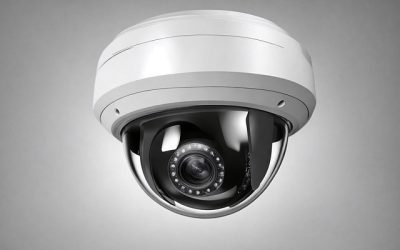In an increasingly digital world, the need for robust security measures has never been more pronounced. One such measure that has gained traction is Back to Base Monitoring (BTBM). This term may sound technical, but it encompasses a range of practices aimed at ensuring safety and security, particularly in the realms of security alarms and surveillance. This article will delve into the meaning of Back to Base Monitoring, its significance, and how it can benefit both individuals and businesses.
Introduction to Alarm Systems
An alarm system is a crucial component of any security setup, providing a reliable means of detecting and responding to potential threats. Whether for a home, business, or retail premises, alarm systems can be customised to suit individual needs and circumstances, making them a versatile solution for various environments.
The primary function of an alarm system is to alert security professionals and nominated contacts in the event of an intruder attempt or other security breach. This immediate alert allows for a swift response, ensuring that any potential threat is addressed promptly. Alarm systems can be integrated with other security services, such as back to base monitoring, to provide a comprehensive security solution that enhances the overall safety of a property.
A professional security service can help design and install an alarm system that meets the specific needs of a property, ensuring maximum safety and protection. These systems can be monitored remotely, allowing homeowners and business owners to keep an eye on their property from anywhere, providing an added layer of convenience and control.
The benefits of an alarm system are numerous, including enhanced security, peace of mind, and the protection of valuable assets. Alarm systems can be equipped with a range of features, such as motion detectors, door and window sensors, and video cameras, to provide a robust defence against potential threats.
A reliable alarm system is essential for any property, serving as the first line of defense against intruders and other security system breaches. Whether used in homes, businesses, or retail premises, alarm systems offer a dependable solution to safeguard property and ensure the safety of occupants. By incorporating advanced features and professional monitoring services, alarm systems can be tailored to suit the unique needs of any space, providing comprehensive protection and peace of mind.
Understanding Back to Base Monitoring
At its core, Back to Base Monitoring refers to a system where alarms and surveillance equipment communicate directly with a central monitoring station. This monitoring centre acts as a hub, staffed by security professionals 24/7, receiving signals from various devices, such as burglar alarms, fire alarms, and CCTV systems. When an alarm is triggered, the monitoring station is alerted instantly, allowing for a swift response.
The term “back to base” signifies the return of information to a central point, ensuring that any potential threat is addressed promptly. This system can be particularly beneficial in situations where immediate action is required, such as a break-in or a fire outbreak.
The Components of BTBM
To fully appreciate Back to Base Monitoring, it is essential to understand its key components. These include:
- Alarm Systems: These are the primary devices that detect unauthorised access or emergencies. They can range from simple door sensors to complex systems that integrate motion detectors and glass break sensors.
- Central Monitoring Station: This is the heart of BTBM, often referred to as the control room. Staffed by trained professionals, the control room receives alerts from alarm systems and coordinates responses, such as notifying the police or fire services. It functions as a central hub for operational support and response coordination, providing 24/7 monitoring, immediate communication with clients, and dispatching security personnel to ensure the safety of both homes and businesses.
- Communication Technology: Modern BTBM relies on various communication technologies, including landlines, mobile networks, and internet connections, to ensure that alarms reach the monitoring station without delay.
The Importance of Back to Base Monitoring
Back to Base Monitoring offers a plethora of benefits, making it an attractive option for many. Understanding its importance, especially during an emergency, can help individuals and businesses make informed decisions about their security needs. Professional monitoring services ensure a prompt and efficient response during critical situations, such as a break-in, alleviating the stress of having to respond personally and allowing clients to focus on their safety and well-being.
Enhanced Security
One of the most significant advantages of BTBM is the enhanced security it provides. With a direct line to a monitoring station, any alarm triggered is dealt with immediately. This rapid response can deter potential intruders, as they are aware that their actions will not go unnoticed. By preparing for any possible intrusion, BTBM ensures that properties are under constant surveillance, providing tailored security solutions that offer peace of mind.
Furthermore, the presence of a monitoring service can provide peace of mind for property owners. Knowing that a professional team is keeping an eye on their premises can alleviate anxiety, especially for those who may be away from home for extended periods.
24/7 Monitoring
Another critical aspect of BTBM is the round-the-clock monitoring it offers. Unlike traditional alarm systems that may only alert the homeowner, Back to Base Monitoring ensures that trained professionals are always on duty, ready to respond to any emergencies. In the event of an alarm trigger, the monitoring team can quickly dispatch security patrol vehicles to the location, ensuring immediate and direct action to address security events at both residential and commercial properties.
This continuous surveillance is particularly valuable for businesses that may operate outside of regular hours. Having a dedicated team monitoring premises can help prevent losses and protect assets, making it a worthwhile investment for many organisations.
How Back to Base Monitoring Works
Understanding how a Back to Base alarm operates can demystify the process and highlight its effectiveness. Trained staff at the monitoring centre can determine the type and level of threat when an alarm is triggered, ensuring an appropriate response. They can also determine the seriousness of an alert without unnecessary interruptions to the property owner. The following outlines the typical workflow involved in BTBM.
Alarm Activation
The process begins when an alarm is activated, typically due to intruder attempts such as a motion detector being triggered or a door sensor being breached. Once the alarm is set off, it sends a signal to the central monitoring station.
Response Protocol
Upon receiving the alarm signal, the monitoring station follows a predetermined response protocol. This often involves:
- Verifying the alarm: The monitoring team may attempt to contact the property owner to confirm whether the alarm is a false alarm or a genuine threat.
- Notifying authorities: If the alarm is confirmed as legitimate, the monitoring team will alert the relevant authorities, such as the police or fire brigade.
- Reporting incidents: The monitoring station will document all incidents, including the arming and disarming of alarms, to ensure comprehensive reporting and accountability.
- Providing updates: The monitoring station will keep the property owner informed of the situation, ensuring they are aware of any developments.
Choosing the Right BTBM Service
When considering Back to Base Monitoring, it is essential to choose a service that is well-suited to specific needs and requirements. Several factors should be taken into account to ensure the best fit.
Assessing Your Needs
Before selecting a BTBM provider, it is crucial to assess your security needs. Consider the following questions:
- What type of property do you need to protect? Do you need residential security or commercial security?
- What are the specific risks associated with your property?
- Do you have an existing security system that can be integrated with new monitoring technologies?
- Do you require additional features, such as video surveillance or environmental monitoring (e.g., smoke or flood detection)?
By answering these questions, individuals and businesses can better understand what they require from a monitoring service, leading to a more informed choice.
Researching Providers
Once needs have been assessed, the next step is to research potential BTBM providers. Look for companies with a strong reputation within the security industry and positive customer reviews. It can be helpful to seek recommendations from friends, family, or colleagues who have experience with monitoring services.
Additionally, consider the following factors when evaluating providers:
- Response times: How quickly does the monitoring station respond to alarms?
- Customer support: Is there a dedicated support team available to assist with queries or issues?
- Technology: What kind of technology does the provider use, and is it up-to-date?
Cost Considerations
While the benefits of Back to Base Monitoring are evident, it is essential to consider the associated costs. Understanding the financial implications, including the potential costs related to system failure, can help individuals and businesses budget effectively.
Initial Setup Costs
The initial setup costs for BTBM can vary significantly based on the complexity of the system. Factors influencing these costs include:
- The type and number of alarm devices required.
- The installation fees charged by the monitoring provider.
- Any additional features, such as video surveillance or environmental sensors.
It is advisable to obtain quotes from multiple providers to ensure a competitive price. Many providers offer an easy online form to request quotes, making it convenient to compare options. However, it is essential to balance cost with the quality of service offered.

Ongoing Monitoring Fees
In addition to initial setup costs, ongoing monitoring fees should also be factored into the budget. These fees typically cover the 24/7 monitoring service provided by the central station. The cost may vary based on the level of service and the specific features included in the package.
Many providers offer tiered pricing structures, allowing customers to select a plan that best suits their needs. It is wise to review the terms and conditions to ensure transparency regarding any additional charges. To get started, you can request a detailed quote or service plan from your chosen provider to understand all the costs involved.
The Future of Back to Base Monitoring
As technology continues to evolve, so too does the landscape of Back to Base Monitoring. Innovations in smart home technology, artificial intelligence, and machine learning are set to enhance the capabilities of monitoring services. Future technologies will ensure that systems are more connected, allowing seamless integration with existing security alarm systems. This connectivity will provide comprehensive security by offering real-time notifications and monitoring capabilities, thereby enhancing control for business clients over their premises without needing to be physically present.
Integration with Smart Home Technology
Many modern alarm systems can now integrate seamlessly with smart home technology. This allows homeowners to monitor their properties remotely via smartphones or tablets, providing an added layer of convenience and control.
Such integration can also lead to more efficient monitoring, as smart devices can communicate with each other, providing real-time updates and alerts. This level of connectivity can significantly enhance the effectiveness of Back to Base Monitoring.
Artificial Intelligence and Machine Learning
Artificial intelligence (AI) and machine learning are increasingly being utilised in security systems. These technologies can analyse patterns and behaviours, helping to reduce false alarms and improve response times. This allows individuals to focus on their daily activities without worrying about their property, knowing that AI and machine learning are monitoring their assets effectively.
As these technologies continue to advance, the future of Back to Base Monitoring looks promising. Enhanced security measures and improved efficiency will undoubtedly benefit both individuals and businesses alike.
Conclusion
Back to Base Monitoring represents a vital component of modern security practices. By understanding its meaning, importance, and functionality, individuals and businesses can make informed decisions about their safety needs. With the right monitoring service in place, peace of mind can be achieved, knowing that help is just a signal away, and properties remain secure even when clients are away.
As technology continues to evolve, the potential for Back to Base Monitoring will only expand, offering even greater security solutions for the community. Embracing these advancements can lead to safer environments and a stronger sense of security for all.










